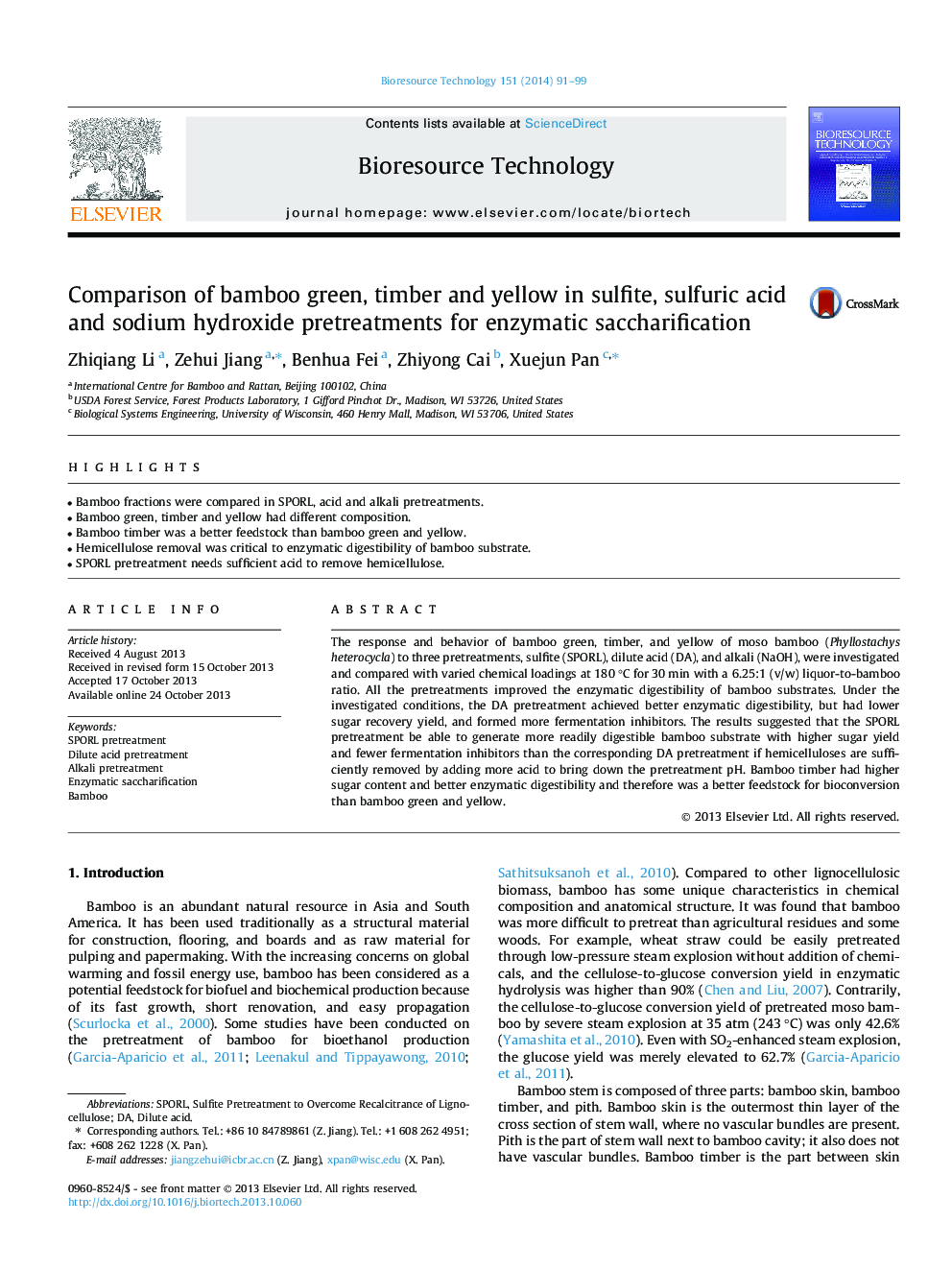| Article ID | Journal | Published Year | Pages | File Type |
|---|---|---|---|---|
| 7079651 | Bioresource Technology | 2014 | 9 Pages |
Abstract
The response and behavior of bamboo green, timber, and yellow of moso bamboo (Phyllostachys heterocycla) to three pretreatments, sulfite (SPORL), dilute acid (DA), and alkali (NaOH), were investigated and compared with varied chemical loadings at 180 °C for 30 min with a 6.25:1 (v/w) liquor-to-bamboo ratio. All the pretreatments improved the enzymatic digestibility of bamboo substrates. Under the investigated conditions, the DA pretreatment achieved better enzymatic digestibility, but had lower sugar recovery yield, and formed more fermentation inhibitors. The results suggested that the SPORL pretreatment be able to generate more readily digestible bamboo substrate with higher sugar yield and fewer fermentation inhibitors than the corresponding DA pretreatment if hemicelluloses are sufficiently removed by adding more acid to bring down the pretreatment pH. Bamboo timber had higher sugar content and better enzymatic digestibility and therefore was a better feedstock for bioconversion than bamboo green and yellow.
Keywords
Related Topics
Physical Sciences and Engineering
Chemical Engineering
Process Chemistry and Technology
Authors
Zhiqiang Li, Zehui Jiang, Benhua Fei, Zhiyong Cai, Xuejun Pan,
